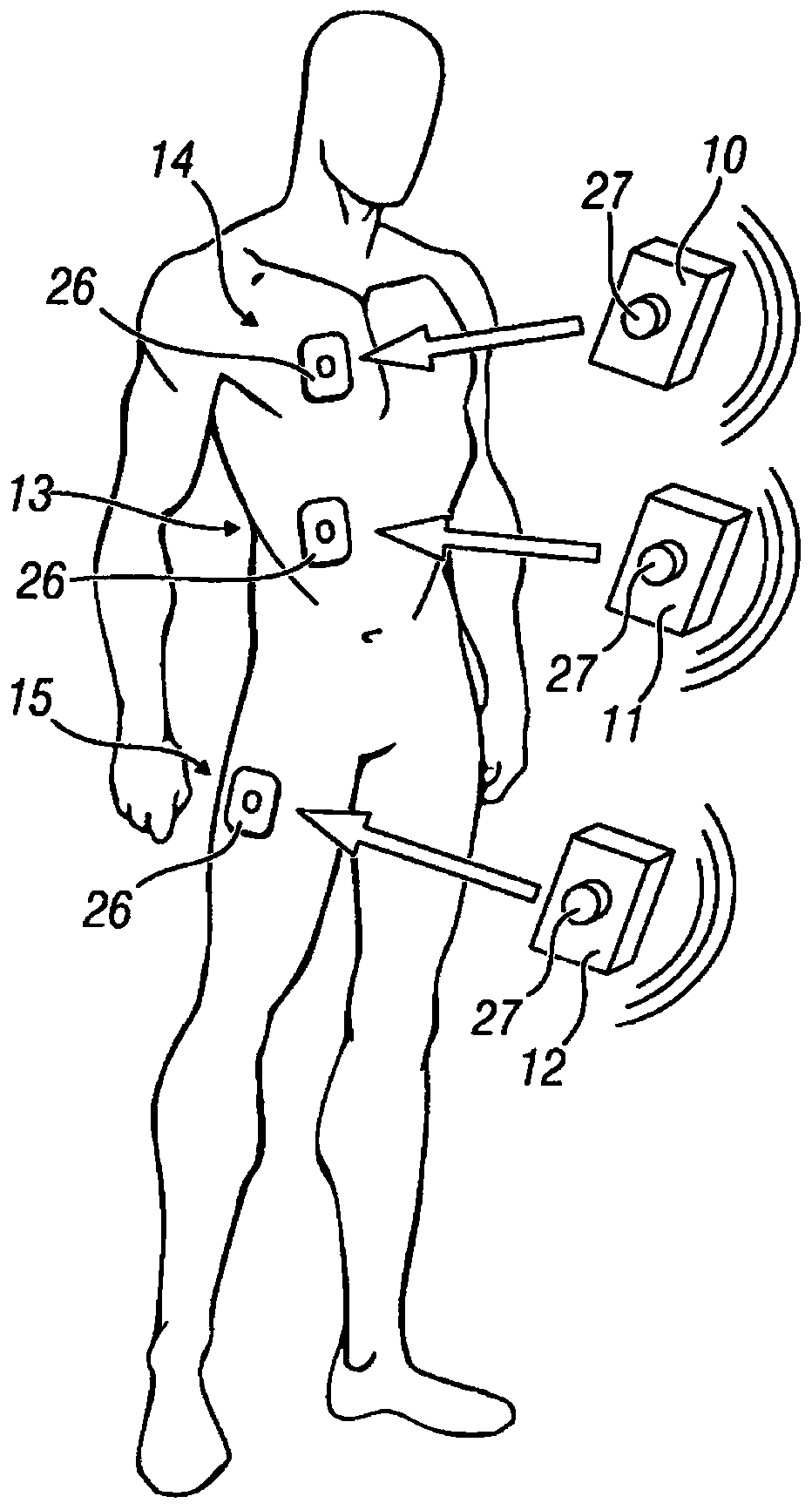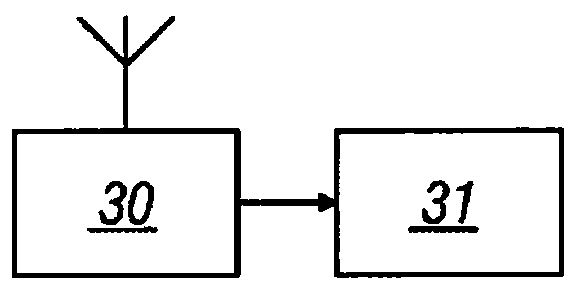Wearable device for continuously monitoring respiratory rate
A technology of respiration rate and quaternion, applied in the direction of evaluating respiratory organs, applications, telemetry patient monitoring, etc.
- Summary
- Abstract
- Description
- Claims
- Application Information
AI Technical Summary
Problems solved by technology
Method used
Image
Examples
Embodiment Construction
[0018] Referring to the accompanying drawings, the wearable device for continuous monitoring of respiration rate according to the present invention includes three inertial units 10, 11 and 12, each inertial unit consisting of an accelerometer, a gyroscope and a magnetometer. The unit 11 is positioned on the abdomen 13 and the unit 10 on the chest 14 for recording the motion of the thoracic-abdominal wall divided into thoracic and abdominal contributions, respectively. The third unit 12 is positioned on a part of the body that is not affected by breathing movements but is fixed relative to the torso and serves as a reference for the other two units. This is especially important for inferring motion information related to breathing alone in semi-static situations (patient in a wheelchair) and dynamic situations (eg while walking). They may eg be positioned at the level of the pelvis (superior iliac spine 15 or near the coccyx). Furthermore, the described modular construction en...
PUM
 Login to View More
Login to View More Abstract
Description
Claims
Application Information
 Login to View More
Login to View More - R&D
- Intellectual Property
- Life Sciences
- Materials
- Tech Scout
- Unparalleled Data Quality
- Higher Quality Content
- 60% Fewer Hallucinations
Browse by: Latest US Patents, China's latest patents, Technical Efficacy Thesaurus, Application Domain, Technology Topic, Popular Technical Reports.
© 2025 PatSnap. All rights reserved.Legal|Privacy policy|Modern Slavery Act Transparency Statement|Sitemap|About US| Contact US: help@patsnap.com



